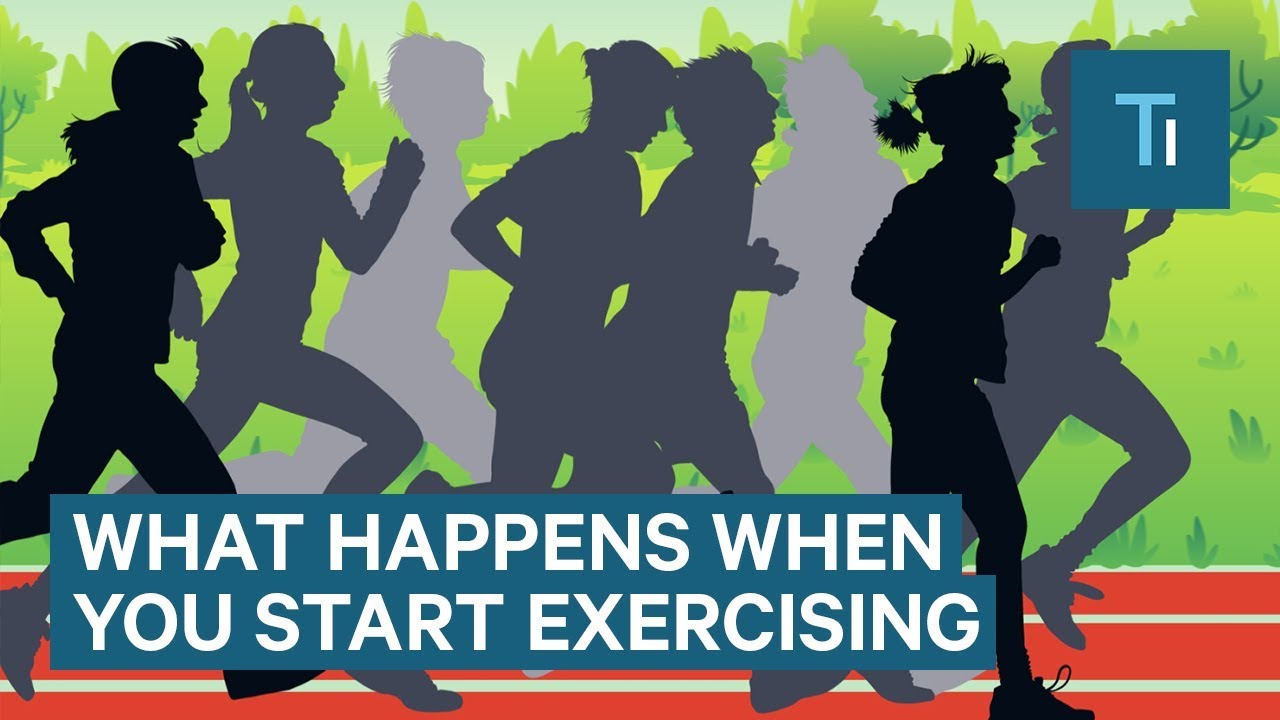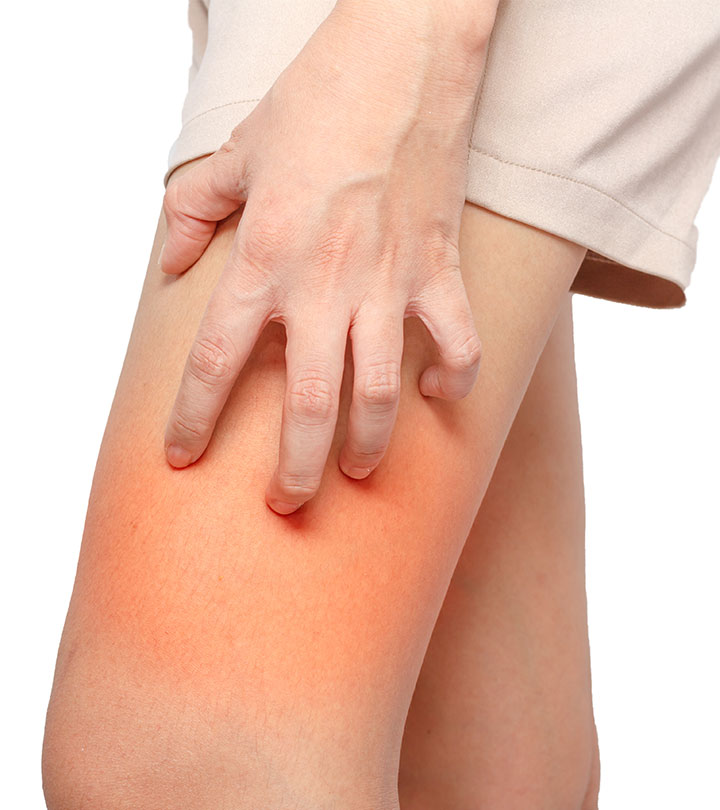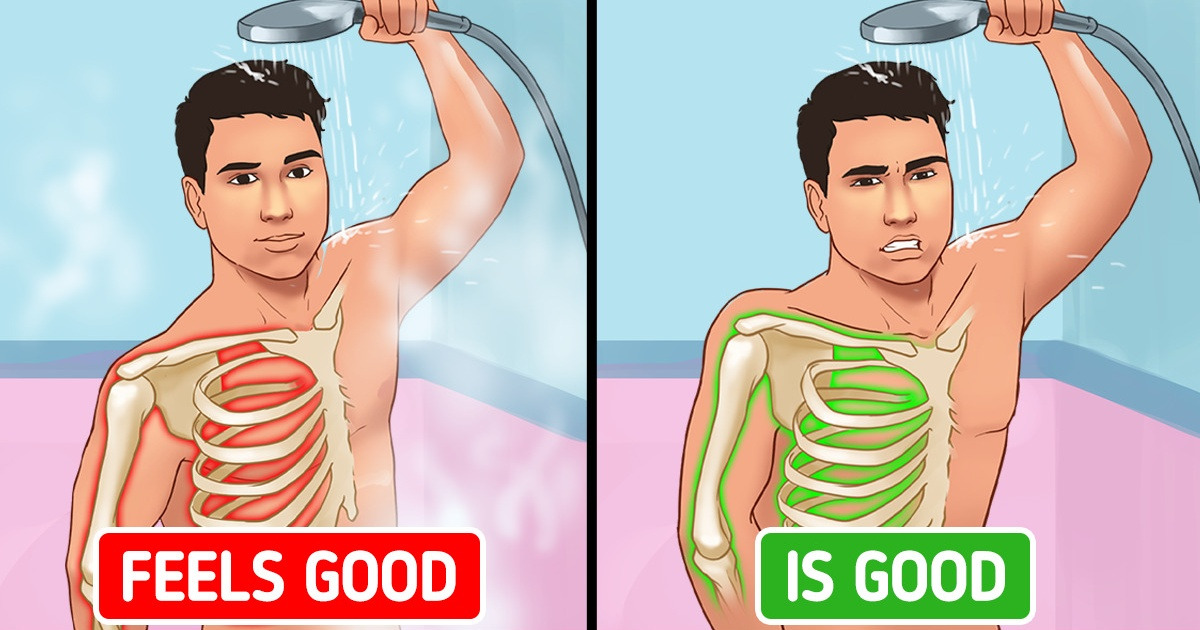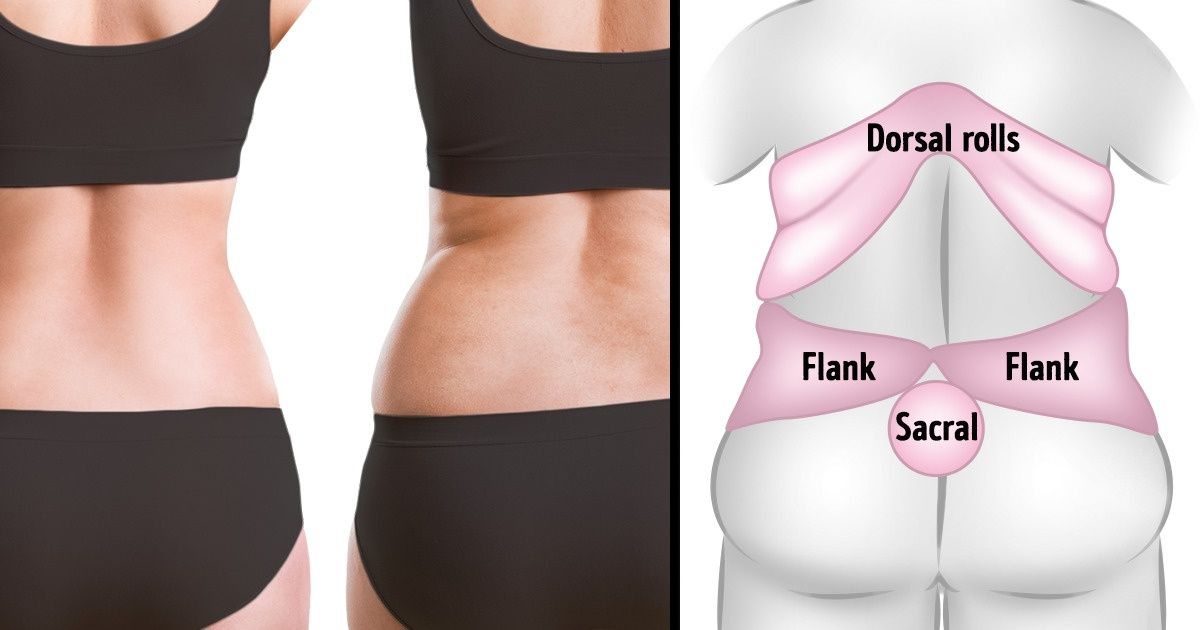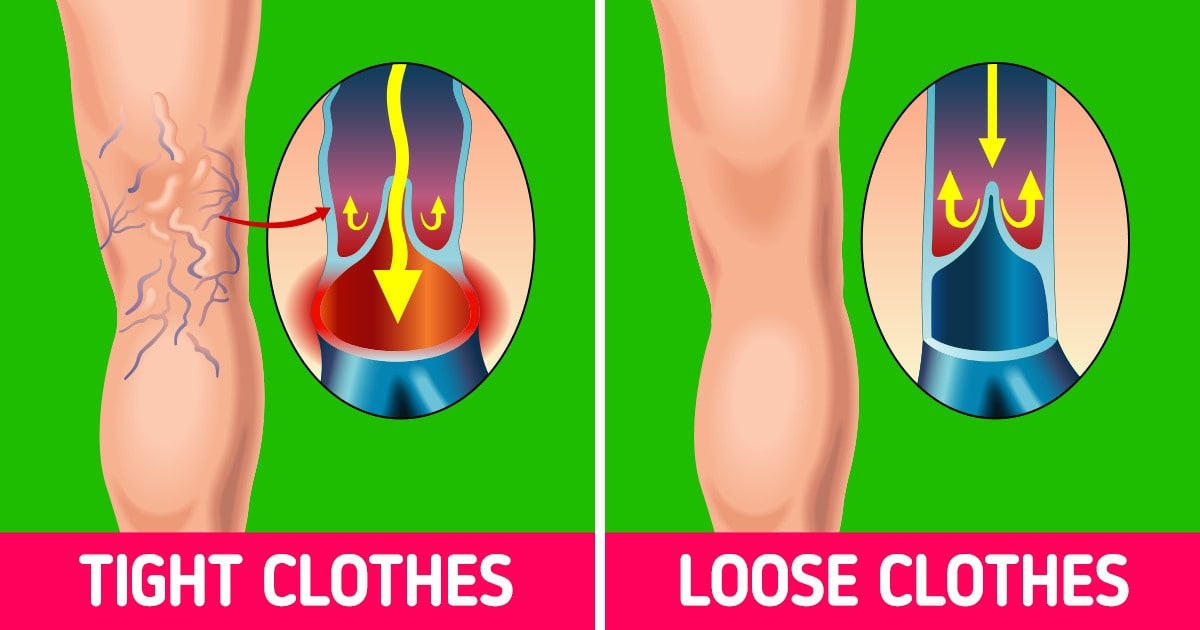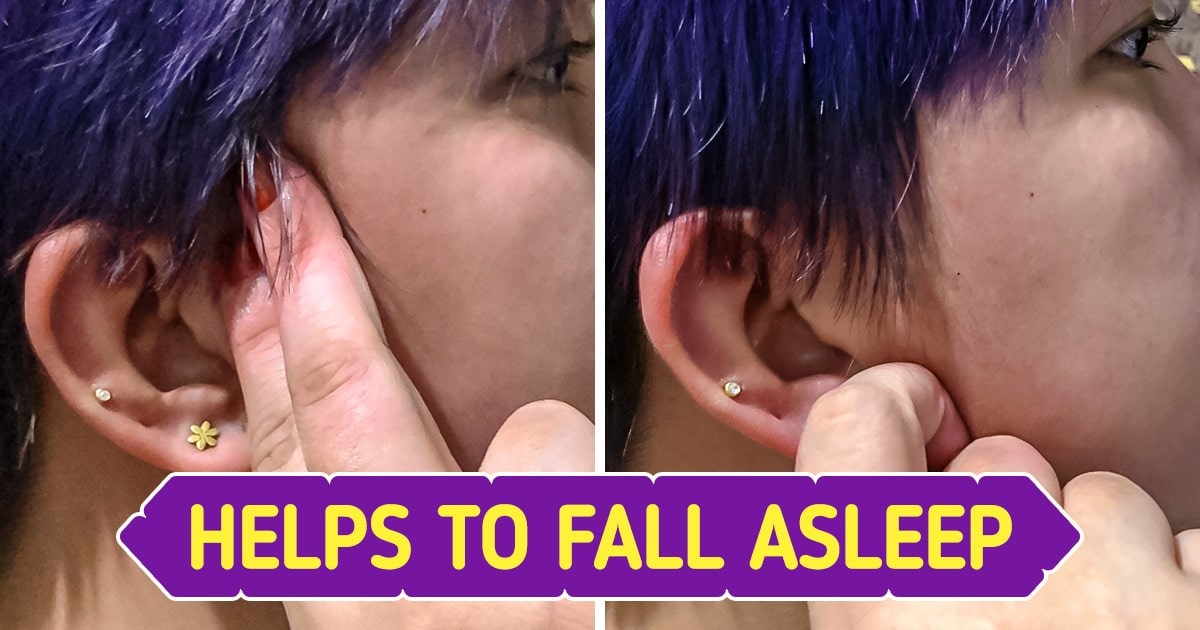The jump squat is the power-packed of the squat. They are also known as squat jumps. This exercise works on the buttocks, lower abs and leg muscles. Squat jump and their variations help eliminate fat from the lower part of the body, tone the buttocks and legs and improve strength and balance. This article explains how to perform squats correctly, their benefits and types. Read them!
How To Do Jump Squats Properly
To begin, stand in front of a full-length mirror. Bend your knees slightly, making sure your spine remains upright.
Step By Step Squat Guide
- Stand with your feet shoulder-width apart, hands at your sides, chest up, shoulders back, chin up, and look forward.
- Push the buttocks out, bend your knees and bend over or sitting position. Your knees should not extend beyond your fingers. Lean forward a little to prevent your lower back from bending and getting hurt.
- Lift your palms while you bend down.
- When you get up, push your body up and jumps. Throw your hands down to build strength.
- Land gently on the ground and duck. Raise the palms of your hands, making sure the knees are not caved (this causes injuries) and do not extend beyond the toes.
- Do 3 sets of 15 repetitions each.
Adding daily squat to your legs and buttocks can help you reap the benefits listed in the next section.
What Are The Benefits Of Doing Jumping Squats
Jumping squats have several health benefits. They help build and tone the calves, buttocks, hamstrings, core, and quadriceps. They also have other benefits. We have listed some important ones here.
Burn calories and fat
Doing 30 jump squats burns approximately 100 calories, depending on your current weight and the intensity of the exercise. Many women tend to accumulate fat in the lower body, which is related to many health problems. Adding squats to your routine will help you burn calories and lose fat in your lower body.
Tone your butt, legs, and Abs muscles
Jump Squat is a plyometric version of the normal squat. This high-intensity exercise helps tone the muscles of the legs and buttocks.
Maintain mobility and balance.
Mobility and balance are crucial for movement, daily tasks and a better quality of life. Jumping not only increases mobility but also improves balance. As you get older, the strength of your legs decreases. Squats can help contain the natural weakening of these muscle groups. They help maintain motor balance and help improve brain-muscle communication.
Note: Avoid doing jump squats if you have a leg injury or recover from one.
Increase sports performance
The scientific studies concluded that the squat could help athletes perform better, specifically in resistance exercises. That’s why jumping squats are part of most athletic training sessions.
Improves health
Exercise has many health benefits. It helps improve glucose regulation, lipid metabolism, and insulin sensitivity. High-intensity cardiovascular exercises, such as squats, help reduce the risk of heart disease, hypertension, obesity, and diabetes.
Help with waste disposal.
The jump squat is a cardio exercise that improves the circulation of body fluids and increases sweating. These two actions help to supply nutrients to tissues, organs, and glands and eliminate waste from the body.
In addition to regular squats, here are some variations or other types of squats to improve muscle tone, mobility, and balance.
Types Of Squat Jumps
weighted squat

- Hold a pair of weights while keeping your elbows bent and palms facing each other. Stand with your feet shoulder-width apart.
- Squat down.
- Throw your body up. Raise your hands over your head while jumping in the air.
- Try to land in the same position. Return the arms to the starting position.
- Do 2-3 sets of 15 repetitions each.
Box Jump Squats
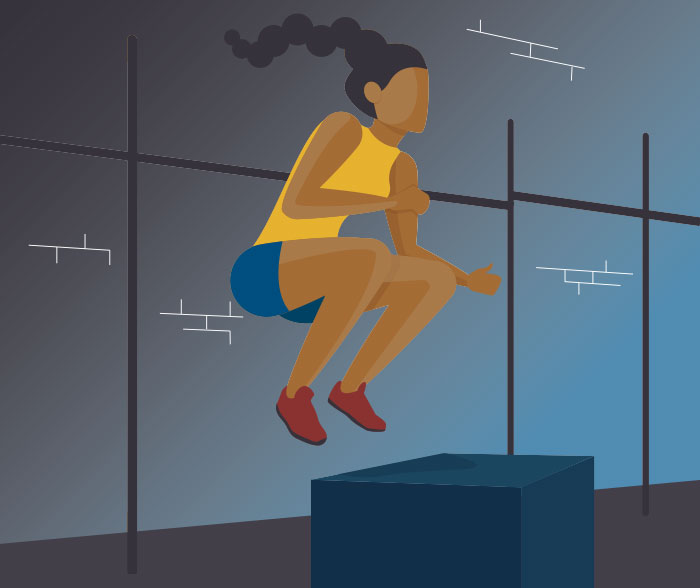
- Place a stable table or exercise box about three feet away from you.
- Stand with your feet shoulder-width apart, shoulders back and chest and chin up.
- Squat a little so that your body jumps.
- Land in the box, bend down and jump to the ground.
Single-Leg Jump Squats
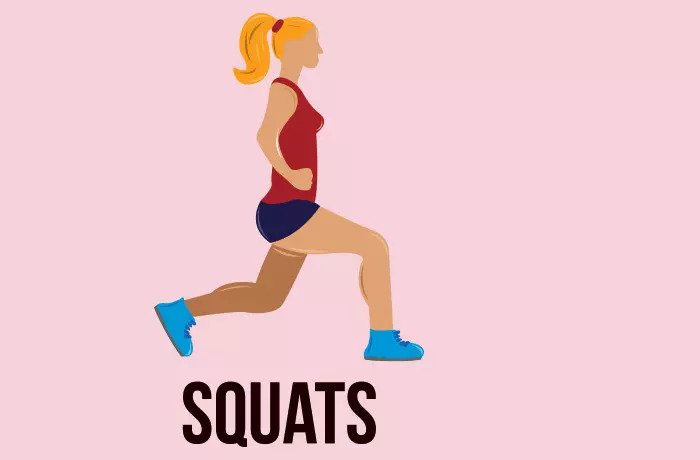
- Stretch one leg in front.
- Stretch your hands also in front.
- Squat as low as you can.
- You can use a piece of furniture to balance yourself.
Frog Squats
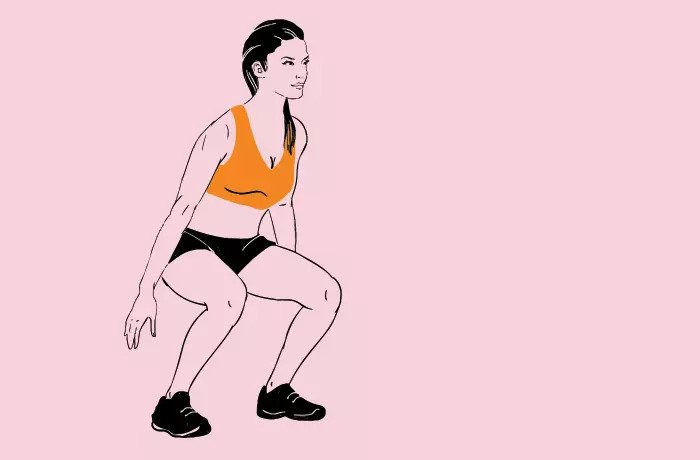
- You have to do this the same way burpees do.
- When you bend down, jump and fall with your hands in front of you.
- Go back and repeat.
- Continue stretching and retreating in a similar way to how you do burpees.
Jumping Jack Squats
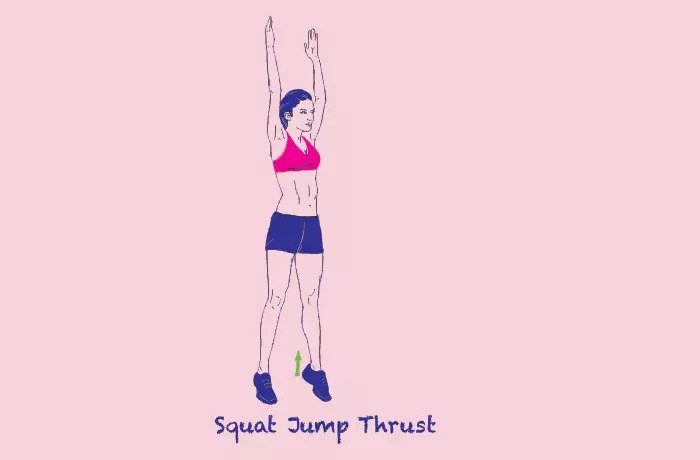
- Start doing jumping jacks.
- While your arms fall, bend down.
- When your arms go up, your body should bend down.
Prisoner Squats
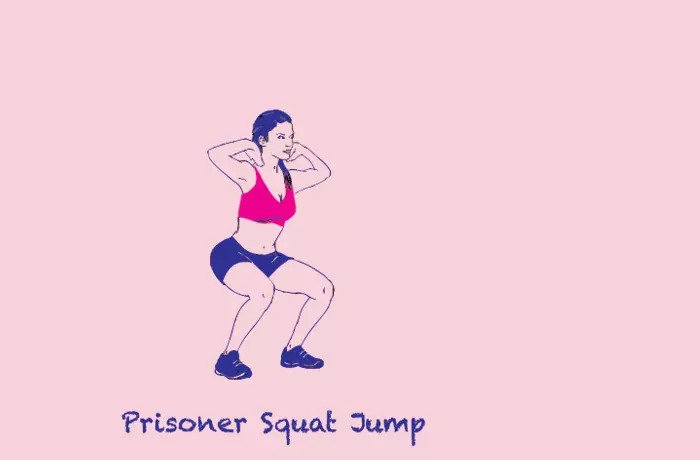
- Keep your hands behind your head.
- Push your hips back while bending.
- Keep your shoulders and arms straight.
- Lower your body and bend down.
Bicep Curl Squats

- Perform any of the previous squats with weights.
- Use weights that you can lift comfortably. Always be sure to maintain proper balance without weights. That way, you won’t hurt yourself by doing any of these squats with weights.
Uneven Squats
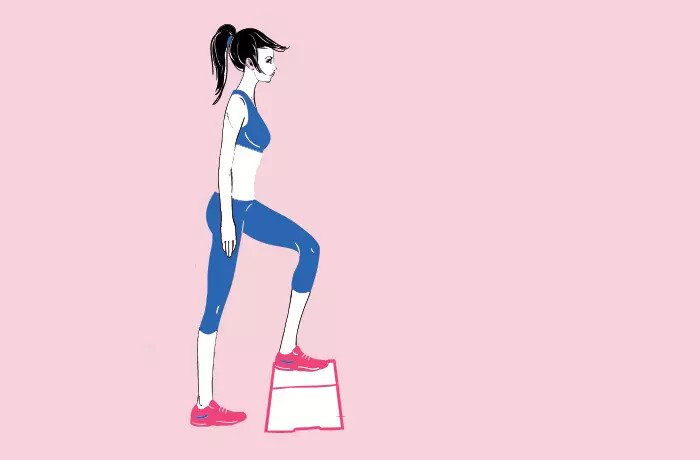
- Place a table at a small height to do this squatting exercise.
- Place one foot on the floor and the other on the board.
- Do your regular squats.
- Be sure to balance your weight evenly.
- Do not force the knee when jumping and bending down.
- If you have trouble doing this, do not try this squat.
Wall Squats
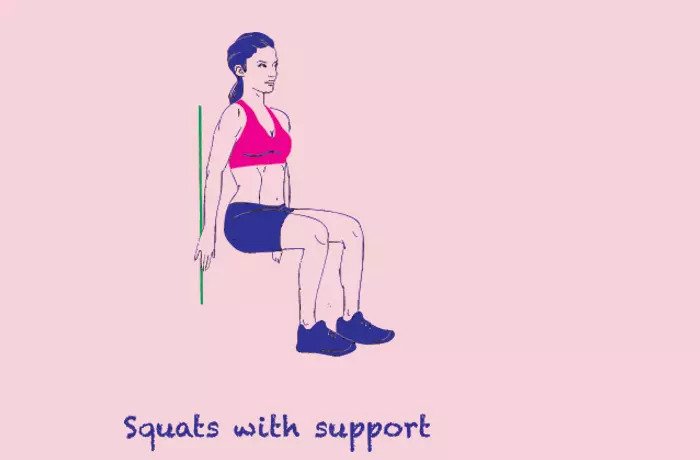
These are regular squats made against a wall.
- Do regular squats, but instead of pushing your hips out, make sure your back is straight against the wall.
- Don’t bend to avoid hurting yourself.
- Repeat without sliding up and down the wall.
Regular squats
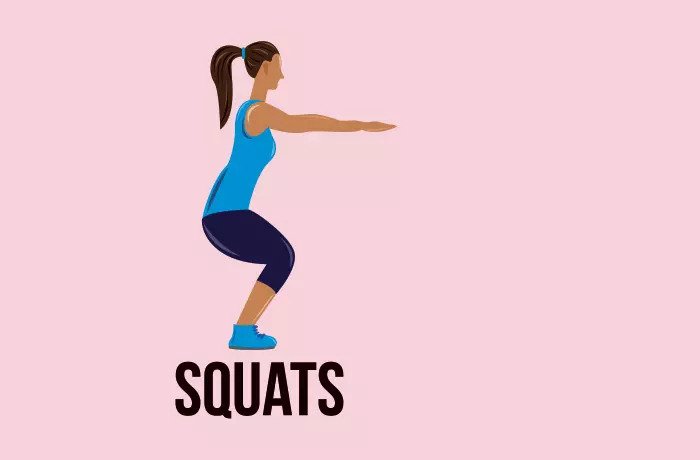
- Stand with your feet slightly wider than shoulder-width.
- With your feet firmly on the floor, push your hips out while slowly lowering.
- Make sure the toes point forward, the front knees and the head and shoulders straight.
- Get up slowly.
- Repeat the same.
Monkey Squats
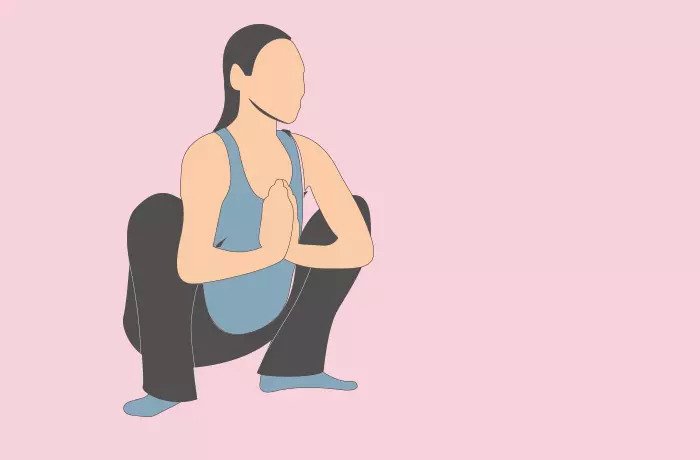
- Stand with legs slightly wider than shoulder-width.
- Reach a knee or toe (depending on how flexible you are).
- Holding your finger, bend down as low as you can.
- Slowly raise and release your finger.
- Be sure to never pull or push your toe or knee.
Sumo squat

- Keep your feet a little more than shoulder-width.
- Make sure your feet are not so far apart that you lose your balance.
- Hold a heavyweight with both hands and do a squat.
- Remember to keep your upper body straight while bending your knees.
- Lower yourself as much as you can.
There you have: a simple and easy guide to squat correctly, along with its benefits and variations. Do it at home and you will certainly see a difference in muscle tone and fitness. Regards!

